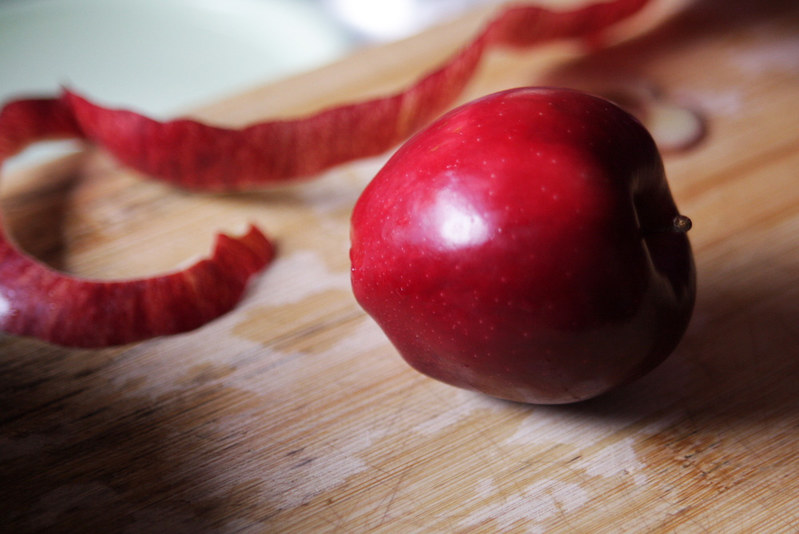
"apple peel" by Clara T is licensed under CC BY-ND 2.0
A tried-and-true structure for an academic essay paragraph is PEEL:
P for Point or topic sentence
E for Example
E for Explanation
L for Link back to the question
The point or topic sentence spells out simply and clearly what the point or topic of the paragraph is going to be. It helps the reader know what to expect. The point or topic of the paragraph must be related to the essay question (if it isn't, delete that paragraph and find another point or topic which is related to the question). So your topic sentence is likely to include some key words and phrases from the question itself. It's a good idea to include a signposting word or phrase in the topic sentence to help the reader understand how this paragraph fits into your argument. Signposting words and phrases include "The first factor which influences....", or "Another example of...", or "On the other hand...." or "Finally,....".
If you were writing an essay on the question "Describe how caregivers can influence children's psychological development", then one example of a topic sentence might be "Additionally, caregivers can influence children's psychological development by the way they talk to their children".
Most of the rest of the sentences in the paragraph will be example or explanation sentences which expand on the point or topic of the paragraph.
The final sentence of the paragraph links back to the essay question. Like the topic sentence, this sentence probably includes key words and phrases in the essay question. It clearly states how the ideas in this paragraph help to answer the question. For example "This shows that caregivers can positively influence children's psychological development by talking to their children as much as possible".
Comments
New comment
The first thing to look at whilst answering the question are the key words. When are the key words looked at or defined. Yes, I know from the introduction part of the essay. Then, PEEL comes in after the introduction actually. And at the end, comes the conclusion after the writings of the central arguments whilst using the PEEL methodology that Care tell about in CC BY-ND 2.0.
New comment
Thank you. I found this really helpful.